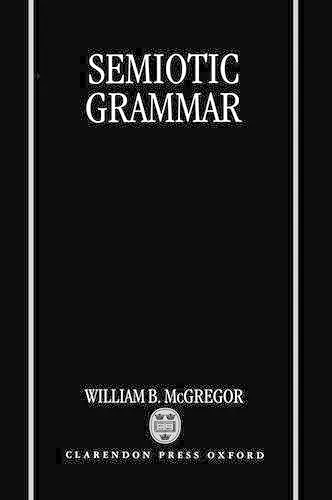Semiotic Grammar
Format:Hardback
Publisher:Oxford University Press
Published:4th Sep '97
Currently unavailable, and unfortunately no date known when it will be back

The label `semiotic grammar' captures a fundamental property of the grammars of human languages: not only is language a semiotic system in the familiar Saussurean sense, but its organizing system, its grammar, is also a semiotic system. This proposition, explicated in detail by William McGregor in this book, constitutes a new theory of grammar. Semiotic Grammar is `functional' rather than `formal' in its intellectual origins, approaches, and methods. It demonstrates, however, that neither a purely functional nor a purely formal account of language is adequate, given the centrality of the sign as the fundamental unit of grammatical analysis. The author distinguishes four types of grammatical signs: experiential, logical, interpersonal, and textural. The signifiers of these signs are syntagmatic relationships of the following types, respectively: constituency, dependency, conjugational (scopal) and linking (indexical, connective). McGregor illustrates and exemplifies the theory with data from a variety of languages including English, Acehnese, Polish, Finnish, Japanese, Chinese, and Mohawk; and from his pioneering research on Gooniyandi and Nyulnyul, two languages of the Kimberleys region of Western Australia.
As one who desires to produce a 'practical' bilingual grammar and dictionary for a group of people living in a multilingual-multicultural environment, I found many of M's arguments for semiotic grammar compelling, largely because he attempts to explain linguistic units on the basis of the unity of syntax, semantics and pragmatics. * Lou Hohulin, Notes on Linguistics 2.4 (1999) *
ISBN: 9780198236887
Dimensions: 242mm x 165mm x 30mm
Weight: 843g
448 pages